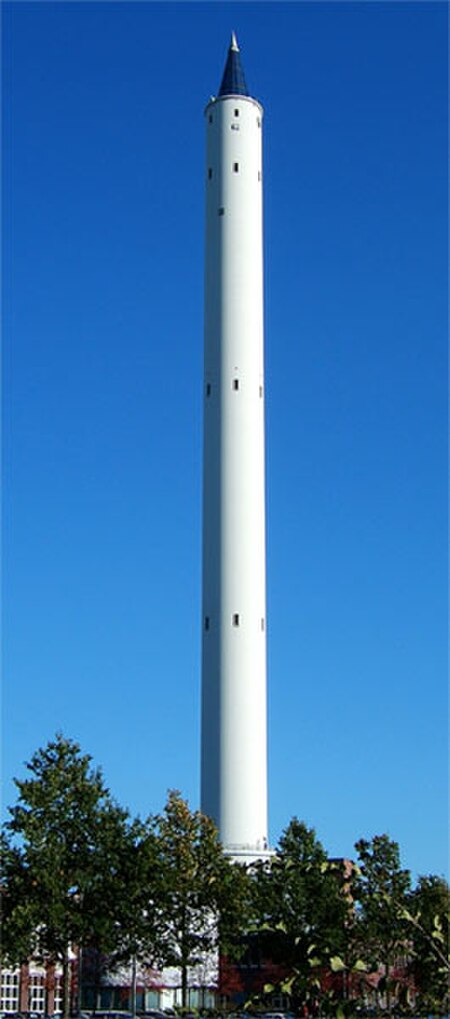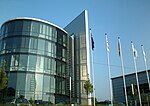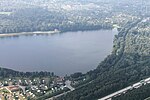Fallturm Bremen

Fallturm Bremen is a drop tower at the Center of Applied Space Technology and Microgravity at the University of Bremen in Bremen. It was built between 1988 and 1990, and includes a 122-metre-high drop tube (actual drop distance is 110 m), in which for 4.74 seconds (with release of the drop capsule), or for over 9 seconds (with the use of a catapult, installed in 2004) weightlessness can be produced. The entire tower, formed out of a reinforced concrete shank, is 146 metres high. The 122-metre drop tube is free-standing within the concrete shell, in order to prevent the transmission of wind-induced vibrations, which could otherwise result in the airtight drop capsule hitting the walls. The drop tube is pumped down prior to every free-fall experiment to about 10 Pa (~ 1/10 000 atmosphere). Evacuation takes about 1.5 hours.
Excerpt from the Wikipedia article Fallturm Bremen (License: CC BY-SA 3.0, Authors, Images).Fallturm Bremen
Am Fallturm, Bremen Horn-Lehe (Bremen-Ost)
Geographical coordinates (GPS) Address Website Nearby Places Show on map
Geographical coordinates (GPS)
| Latitude | Longitude |
|---|---|
| N 53.1103 ° | E 8.8579 ° |
Address
Zentrum für angewandte Raumfahrttechnologie und Mikrogravitation
Am Fallturm 2
28359 Bremen, Horn-Lehe (Bremen-Ost)
Free Hanseatic City of Bremen, Germany
Open on Google Maps








